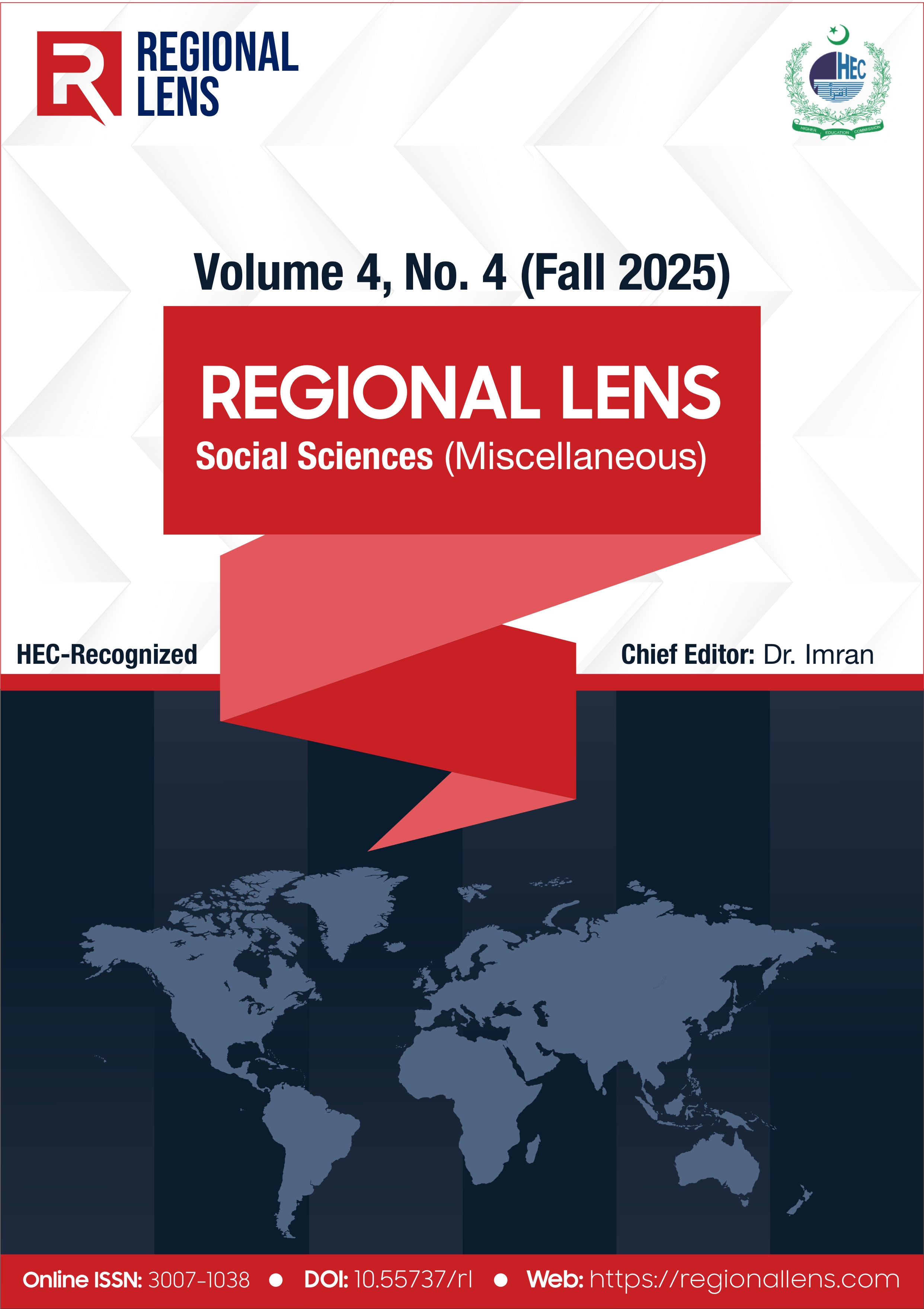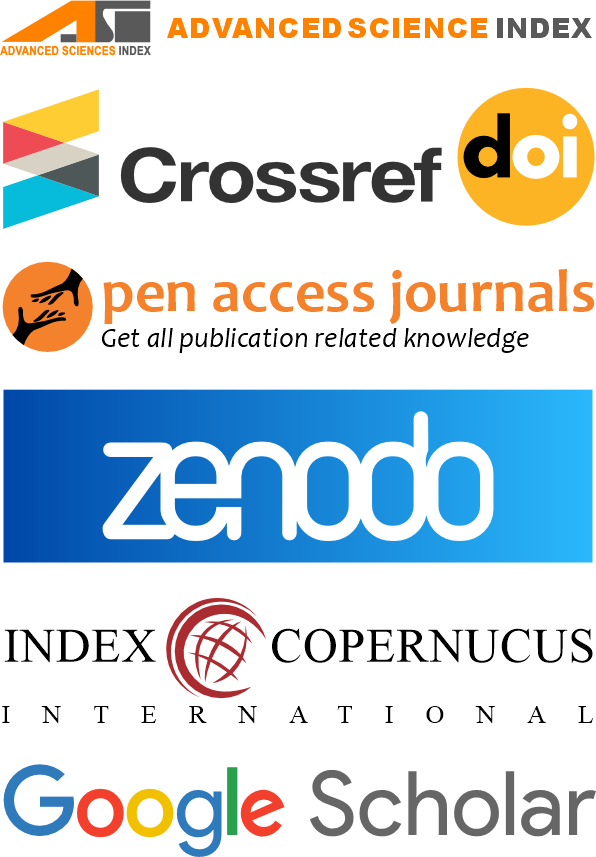Unmasking Risk Factors Behind the Substance Abuse: A Qualitative Exploration
DOI:
https://doi.org/10.55737/rl.2025.42106Keywords:
Substance Abuse, Risk Factors, Thematic AnalysisAbstract
The objective of the current study was to explore the risk factors of substance abuse among university students. Using a qualitative approach, this study applied thematic analysis to examine the underlying. Population of the research was students of University of Gujrat. Purposive sampling technique was used to select the sample size. In the present study, in-depth interviews were conducted with 15 diagnosed males using a semi-structured interview guide. The results were analyzed using thematic analysis (Braun & Clarke, 2006) to find out the risk factors of substance abuse among university students. The emic, etic and empirical data was elaborated and seven main themes and further subthemes were made which clearly elaborate the risk factors of using substance. Thematic analysis was done to get all the possible results.
References
Alhammad, M., Aljedani, R., Alsaleh, M., Atyia, N., Alsmakh, M., Alfaraj, A., Alkhunaizi, A., Alwabari, J., & Alzaidi, M. (2022). Family, Individual, and Other Risk Factors Contributing to Risk of Substance Abuse in Young Adults: A Narrative Review. Cureus, 14(12), e32316. https://doi.org/10.7759/cureus.32316
Alkhawaldeh, A., Al Omari, O., Al Aldawi, S., Al Hashmi, I., Ann Ballad, C., Ibrahim, A., Al Sabei, S., Alsaraireh, A., Al Qadire, M., & ALBashtawy, M. (2023). Stress Factors, Stress Levels, and Coping Mechanisms among University Students. The Scientific World Journal, 2023, 2026971. https://doi.org/10.1155/2023/2026971
American Psychiatric Association. (2013). Diagnostic and statistical manual of mental disorders (5th ed.). Arlington, VA: American Psychiatric Publishing.
Anthony, W. A. (1993). Recovery from mental illness: The guiding vision of the mental health service system in the 1990s. Psychosocial Rehabilitation Journal, 16(4), 11-23. https://doi.org/10.1037/h0095655
Arria, A. M., Caldeira, K. M., Bugbee, B. A., Vincent, K. B., & O'Grady, K. E. (2015). The academic consequences of marijuana use during college. Psychology of Addictive Behaviors, 29(3), 564-575. https://doi.org/10.1037/adb0000108
Blows, S., & Isaacs, S. (2022). Prevalence and factors associated with substance use among university students in South Africa: implications for prevention. BMC psychology, 10(1), 309. https://doi.org/10.1186/s40359-022-00987-2
Brook, D. W., Brook, J. S., Zhang, C., Cohen, P., & Whiteman, M. (2002). Drug use and the risk of major depressive disorder, alcohol dependence, and substance use disorders. Archives of General Psychiatry, 59(11), 1039. https://doi.org/10.1001/archpsyc.59.11.1039
Braun, V., & Clarke, V. (2006). Using thematic analysis in psychology. Qualitative Research in Psychology, 3(2), 77–101. https://doi.org/10.1191/1478088706qp063oa
Connery, H. S., McHugh, R. K., Reilly, M., Shin, S., & Greenfield, S. F. (2020). Substance Use Disorders in Global Mental Health Delivery: Epidemiology, Treatment Gap, and Implementation of Evidence-Based Treatments. Harvard review of psychiatry, 28(5), 316–327. https://doi.org/10.1097/HRP.0000000000000271
Doraiswamy, P., Nattala, P., & Murthy, P. (2020). How can today's substance-using youth be helped to quit? Perspectives of college students from Bangalore, India. The International journal of social psychiatry, 66(5), 469–475. https://doi.org/10.1177/0020764020916745
Festinger, L. (1957). A theory of cognitive dissonance. Stanford, CA: Stanford University Press.
Gasa, H. P., Mkhize, S., Shumba, K., Cinini, S. F., & Gopal, N. D. (2022). Risk factors of substance abuse among University students: An exploratory study. International Journal of Criminology and Sociology, 11, 15-27. https://doi.org/10.6000/1929-4409.2022.11.03
Görgülü, Y., Çakir, D., Sönmez, M. B., Köse Çinar, R., & Vardar, M. E. (2016). Alcohol and Psychoactive Substance Use among University Students in Edirne and Related Parameters. Noro psikiyatri arsivi, 53(2), 163–168. https://doi.org/10.5152/npa.2015.9907
Griffin, S. M., Lebedová, A., Cruwys, T., McMahon, G., Foran, A. M., Skrodzka, M., Gallagher, S., Ginty, A. T., & Muldoon, O. T. (2025). Identity change and the transition to university: Implications for cortisol awakening response, psychological well-being and academic performance. Applied psychology. Health and well-being, 17(1), e12608. https://doi.org/10.1111/aphw.12608
Khantzian, E. J. (1997). The self-medication hypothesis of substance use disorders: A reconsideration and recent applications. Harvard Review of Psychiatry, 4(5), 231-244. https://doi.org/10.3109/10673229709030550
Liu, X. Q., Guo, Y. X., & Wang, X. (2023). Delivering substance use prevention interventions for adolescents in educational settings: A scoping review. World journal of psychiatry, 13(7), 409–422. https://doi.org/10.5498/wjp.v13.i7.409
Marlatt, G. A., & Donovan, D. M. (2005). Relapse prevention: Maintenance strategies in the treatment of addictive behaviors (2nd ed.). New York, NY: Guilford Press.
Pedrelli, P., Nyer, M., Yeung, A., Zulauf, C., & Wilens, T. (2015). College Students: Mental Health Problems and Treatment Considerations. Academic psychiatry: the journal of the American Association of Directors of Psychiatric Residency Training and the Association for Academic Psychiatry, 39(5), 503–511. https://doi.org/10.1007/s40596-014-0205-9
Prochaska, J. O., & DiClemente, C. C. (1983). Stages and processes of self-change of smoking: Toward an integrative model of change. Journal of Consulting and Clinical Psychology, 51(3), 390-395. https://doi.org/10.1037//0022-006x.51.3.390
Seligman, M. E. (1975). Helplessness: On depression, development, and death. San Francisco: W.H. Freeman.
Skidmore, C. R., Kaufman, E. A., & Crowell, S. E. (2016). Substance use among college students. Child and Adolescent Psychiatric Clinics of North America, 25(4), 735–753. https://doi.org/10.1016/j.chc.2016.06.004
Volkow, N. D., Koob, G. F., & McLellan, A. T. (2016). Neurobiologic advances from the brain disease model of addiction. New England Journal of Medicine, 374(4), 363-371. https://doi.org/10.1056/nejmra1511480
Welsh, J. W., Shentu, Y., & Sarvey, D. B. (2019). Substance use among college students. Focus, 17(2), 117-127. https://doi.org/10.1176/appi.focus.20180037
Wise, R. A., & Koob, G. F. (2013). The development and maintenance of drug addiction. Neuropsychopharmacology, 39(2), 254-262. https://doi.org/10.1038/npp.2013.261
World Health Organization. (2018). Global status report on alcohol and health 2018. World Health Organization.




